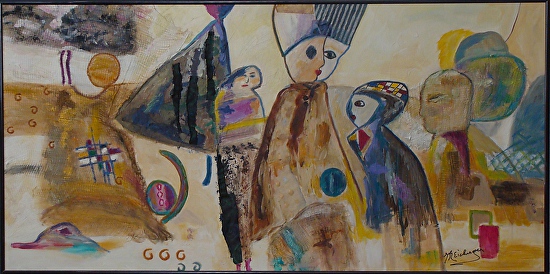
Nurturing
Though the environment is being destroyed by those who are insensitive to their surroundings there is still hope if each of us will take the time to plan and nurture one little seed.
Who Trusts Science Anyway?
It concerns me that the gap between the attitudes of scientists and those of the general public is widening. So many people do not realize that science is simply a way of thinking used by scientists. It is not an absolute but is similar to methods employed by mental health counselors engaged in helping clients overcome personal problems. In both instances, the scientific method begins with collecting background information, forming a hypothesis (a guess) about what is happening, testing the guess, and coming to a conclusion only to start the process over again. It is a never ending cycle of refining results based on tested facts. It requires the researcher, the public (or client) to be willing to be wrong about original assumptions and open to changing their opinion.
Social scientist, Gordon Gauchat was most surprised when he analyzed survey data pertinent to the public’s trust of the scientific community today as compared with forty years ago. He was particularly taken aback with information about conservatives. In 1974, Republicans with college degrees had the highest level of trust in science but as of 2010, they had the lowest. They are not alone in changing their attitude about science. There are many factions in our society that value their own beliefs more than those of the scientific community. Religious groups challenge evolution, industry groups are skeptical of climate change, and wary parents mistrust medical recommendations to vaccinate their children.
What has happened? Why are people so willing to accept pseudoscience and fake reports rather than information that has been tested? I find it even more strange to know that 8 out of 10 Americans believe that scientific advances have improved the lives of most people and 7 out of 10 have a high regard for scientists, yet they distrust the findings of these same investigators.
A 2015 study by the Pew Research Center shows that younger adults are less inclined than older generations to believe vaccines should be required for all children. There is a 37 point gap between scientists’ views about climate change being caused by human activity and those of the general public who believe it is mostly due to natural patterns. 3% are even holdouts who adamantly say that there is no solid evidence the earth is getting warmer. In matters of evolution, 65% of the public do say that humans and other living things have evolved over time while 31% believe humans and other living things have existed in their present forms since the beginning of time.
Scientists who want to understand how to make people more comfortable with scientific information do what good researchers always do, they test their hypotheses. One test demonstrated that when the people were presented census-messages that were the combined results of many scientists, they were more likely to change their opinion than if given arguments based on scientific reasoning. This means that if you think global warming is a hoax, you will most likely not accept a scientific presentation that explains otherwise even if it is filled with accurate data. Instead, if you are told that a censuses of scientists agree to thus and so, then you will be more willing to consider the possibility of the earth’s warming being man-made. (According to NASA’s review of multiple studies on climate change, 97 percent claim that climate-warming is likely due to human activities.)
Consensus-information is powerful because it shows the norm within a community. Though it presents information with a social-science approach rather than a scientific one, it is more comfortable to most people since it is similar to consensus decision-making that is part of the basis for cooperation. Consensus-information gives authority to a contention rather than requiring the individual to become an expert evaluator.
The media has been complicit in making the public more skeptical of scientific studies by promoting false news that emanates from political or business greed. Industries often pay scientists and marketers to spread disinformation. Big business has known for a long time that people make decisions on consensus-information rather than facts and have figured out how to spread doubt in order to build their own consensus-group based on false information. In Merchants of Doubt by Naomi Orestes and Erik Conway, the authors provide story after story about how scientists and advisers with deep connections to politics and industry run effective campaigns to mislead the public.
Let’s ask those who work for the media to increase their investigative reporting and challenge where information is coming from. My suspicion though, is that it will only happen if the public is willing to pay for investigations. there was a time when news departments were independent of advertisers. Edward R Murrow, Barbara Walters, Harry Reasoner, Dan Rather, Bob Woodruff, and Peter Jennings were trusted welcome figures in homes across America. Do you think the public could demand in-depth reporting once again? Are you willing to pay?
Please share your thoughts on my blog site, eichingerfineart.com/blog.
Artwork above: Acrylic Painting / 43” by 84” /$ 1,100.
